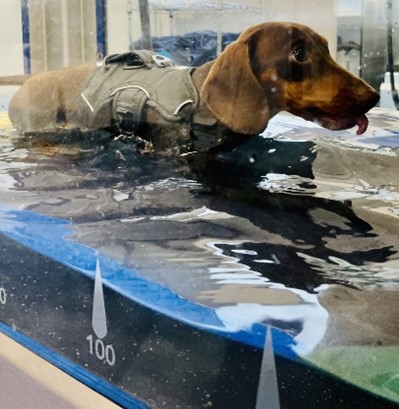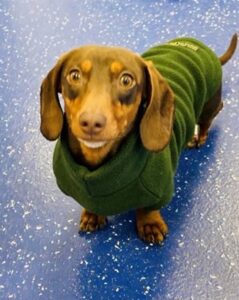
The patella, also known as the kneecap is a small bone that glides up and down a groove within the knee joint when the dog is moving. Some dogs experience luxation (dislocation) of the patella outside of the groove. When this occurs, the dog cannot extend the knee joint properly.
Patella Luxation is a progressive condition unless corrected and can cause some discomfort and can cause wear and tear of the cartilage of the patella and the ridge it slides over when it luxates leading to osteoarthritis. In addition, dogs with medial patella luxation are also more at risk of developing cruciate ligament disease.
Although all dogs can be affected by patella luxation it is more commonly seen in smaller breeds. A common presentation owners may notice is a ‘skipping’ action for a few steps then returning to a normal gait. However not all affected animals will present in the same way, this depends on the grade of luxation.

If you think your dog displays any of these symptoms contact your veterinary surgeon today, at Calder Vets today they will be able to diagnose patella luxation during a physical examination. Radiographs may also be needed to assess the affected knee joint. You will be told the grade of the luxation which will determine the treatment program.
Grade 1 – The kneecap can be luxated out of the groove manually but otherwise remains within.
Grade 2 – The kneecap spontaneously luxates, a skipping lameness is often seen on movement
Grade 3 – The kneecap is permanently luxated but can be manually put back into the groove
Grade 4 – The kneecap is permanently luxated and cannot be manually put back into the groove.
Surgery is strongly advised for grades 3 and 4. Grade 2 surgery is advised if clinical signs are noted. Physiotherapy is then used after surgery to improve recovery. Grade 1 only conservative management is recommended.
Please contact us at Calder Vets in West Yorkshire for a chat on this issue.


News